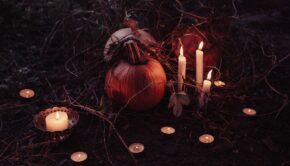Holiness and Health, Culture and Agriculture—An Excerpt from “The Pearl and the Flame”
The following excerpt is from Rabbi Natan’s upcoming Book — The Pearl and the Flame. This book will be a major platform for Organic Torah’s perspective and projects! Learn more here and keep up to date with the latest updates here!
Want to support getting Rabbi Natan’s book out into the world? You can make a donation here! We are very grateful for donations of any amount and we will offer a gift of a signed paperback copy of The Pearl and the Flame for all donations of $72 up to $216 and a gift of a signed hardcover copy for gifts of $360 and above. You can read another excerpt from The Pearl and the Flame here, and early praise for the book here!
—
Holiness and Health, Culture and Agriculture
The complex interaction of parts in a feedback loop creates a pattern that is both challenging and beautiful. There is nothing nostalgic or quaint about the well-run farms that (Wendell) Berry describes or backyard gardens and compost bins such as ours. In fact, as Berry is arguing, these kinds of pattern solutions solve our food production problems in a much more healthy and productive way than the “normal” agribusiness solution of huge mono-crop farms.
We have bought into the lie that only on this industrial model can we feed the hungry of the world. But how efficient are we being when we are creating so many side effects as the result of producing this food? Is this really the only way to do it? Small farms produce, after all, a much larger yield per acre than industrial farms. The problem is that big corporations can’t make huge profits from those small farms.
I want to juxtapose that beauty and craft that Berry describes for the well-run farm with something that may seem completely different: Jewish learning. In Berry’s terms, I’m suggesting a new pattern or pattern of patterns. It comes from the Piaseczner Rebbe, Rabbi Kalonymous Kalman Shapiro. Rabbi Shapira’s comments focus, like Berry’s, on wholeness. He writes:
“The mitzvot (individual commandments) reveal only the “limbs,” while the sefer (book) reveals the essence, the whole structure of which the mitzvot are only the limbs. . . . .
Therefore, when one looks into a book or hears words of Torah, if one only sees or hears one or two things, and especially if someone only wants to hear a nice idea or “droosh”—one only hears the “limbs” and misses the teacher’s wholeness, and doesn’t encounter the prophecy within the words. Therefore, this person only knows what they heard—because they didn’t encounter the whole teacher, the conduit of prophecy, and they’ll remain in all their actions in the same state of doubt and ignorance as before they heard anything.
Therefore, when you study, take only one or two books, according to the time you can allot to them, and study them deeply. And when you hear Torah from a teacher, return often and learn a lot from them. Because it is in the combining of all the limbs that the essence or the person’s wholeness is revealed, and it is through that wholeness that God reveals prophecies. And then a person knows not only the words that one heard, but will also come to reveal from within oneself new thoughts and paths and understandings.”
His analogy between a person and a book is deeply woven into Jewish consciousness. We treat a sacred book with the respect due a person. We lovingly “dress” a Torah; when a sacred book is worn out, it is buried like a person; famous rabbis in Jewish history are often known simply by the name of their books; we sometimes refer to a learned person as a walking book. Neither a person nor a book can be reduced to the sum of its parts.
Rabbi Shapiro puts us into relationship with that wholeness: When you take in that essence, you can then reveal from within yourself new insights. There is a transformative moment when your own wholeness meets the wholeness of the book or the person from whom you are learning. What had been a linear acquisition of external facts becomes inspiration. I come into contact with a living essence and it touches my living essence. Then I become not only a receiver of the Torah, but a living wellspring of Torah.
—
If you enjoyed this excerpt from The Pearl and the Flame, check out more from the book here!






